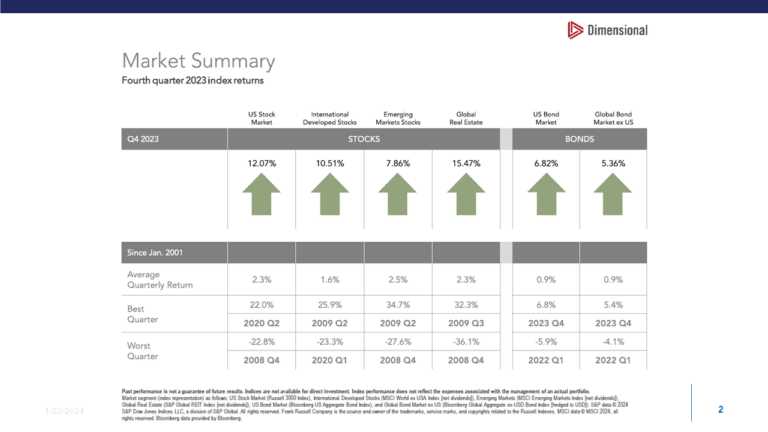After an extended summer hiatus, here is the next installment in a continuing series on the topic of creating a pre-retirement financial planning checklist. You may recall my previous blogs were based upon a simple airplane landing analogy.
After a relatively long and uneventful flight, the crew springs into a flurry of pre landing activities during the last 15 minutes, necessary to guarantee that the landing is safe and on time.
Likewise, as we near our retirement date, there are some critical tasks necessary to be ready for a safe and well-planned transition. In this segment, let’s examine the need to make some substantive changes to our investment portfolio to accommodate the need for retirement income.
The airplane analogy works well in describing this transition. During the long and uneventful flight, your plane probably flew on auto pilot. We can equate this to our working careers when our investment portfolios are in the accumulation phase- much like auto pilot. Simply stated, Modern Portfolio Theory tells us to create a well-diversified, risk based model (stocks, bonds and cash), maintain investment discipline during all market conditions (avoid market timing) and save as much as we can. For most of us, the largest portion of our portfolio is saved in tax-advantaged retirement accounts. While simple, it is highly effective for these reasons:
-
-
- Our employer-sponsored retirement plans are designed to be on auto pilot. We make one very smart decision about how much to save via payroll deduction and one more (hopefully good) decision about how to invest, and then we tend to put it out of our minds since retirement is a long way off and the wonder of tax deferred/tax free compounding takes over.
- Since we are still working, we aren’t dependent on our investments for income and have the luxury of remaining fully invested. When the inevitable market correction hits, we have learned to think about other, more pleasant things and stay the course. Remaining disciplined in down markets, while uncomfortable, has proven to be the best strategy. Typically, it is the individuals who try to actively time the markets who get hurt the worst in stock corrections.
- Since we continue to save and invest during these periods, we are purchasing shares at lower prices, which is really good in the long run.
- Employer-based retirement plans often provide us with Target Date Funds as a ready-made investment option. They do all the heavy lifting in terms of diversification and rebalancing the portfolio and they gradually reduce the risk as we get closer to retirement. They can be highly effective.
-
So what changes when we reach retirement? A lot! We leave the accumulation stage and enter the distribution stage. There are many more factors to manage and we are definitely off of auto pilot. Assuming a total retirement, earned income has stopped and our investment portfolio often becomes the primary source of income beyond Social Security and any pensions. During down markets, we don’t have the luxury of waiting until share prices rebound because we need to pay our bills now.
Firstly, this requires us to analyze the true nature of portfolio risk in retirement and dispel some myths. There is a prevailing but misguided logic that says we should transition our portfolio to completely “safe” investments when we retire and live off the interest. This logic says that we must avoid stocks because they are prone to periodic corrections and we can’t afford to lose money during retirement.
In reality, the problem is a bit more nuanced. There is a much larger risk to our retirement portfolio than periodic stock market corrections and it is called inflation. Over a 30-year period, even modest inflation will decimate the purchasing power of a portfolio that consists of “safe” fixed rate investments like CDs and government bonds. Stocks are required because over time they are the only investment asset class with the potential to outpace inflation.
The real problem is how to configure our retirement portfolio to include the right mix of stocks, but also a suitable non-stock-based income source (typically bonds and cash) from which to draw income during the unavoidable stock market corrections that will happen within a 30-year retirement window. This works because stock prices recover after the correction and historical evidence tells us that over time the average return from stocks is higher than bonds, cash (and inflation) despite the corrections.
-
-
- A good retirement distribution plan requires us to periodically reach into the portfolio and find the right or optimal investments to distribute income from.
- The starting point is to create a “cash bucket” that matches our cash flow needs. With careful planning, we can identify the following cash requirements:
-
-
- An emergency fund.
- Our household income budget for the next 3-6 months.
- Upcoming projects or purchases- travel, home remodeling, etc.
-
-
-
Once identified, we deposit the total amount in a safe and liquid account. The return will be negligible, but that’s ok. As the funds are consumed over time, they are replaced by periodic distributions from the investment portfolio. In this way, we have created a cash buffer that insulates us from short-term movements in the stock and bond portions of the portfolio.
-
-
- A well-designed investment model will also contain a diversified allocation of both stocks and bonds. During periods of good stock performance, we harvest dividend and capital gain distributions and sell the most overweight portions of the portfolio model (the biggest winners) to refill the cash bucket.
-
But what about when stocks are not doing well? Typically, bonds are not highly correlated with stocks, meaning they don’t behave in the same way. So even during a stressful period for stocks, there will be some part of the portfolio that is not under water and can be harvested for income.
Let’s say that your portfolio equals $1 million, you use the traditional retiree 60% stock and 40% bond allocation and you need to distribute $40,000 per year to supplement your Social Security benefits and pension. Theoretically, you could fund your future income from the bond portion of the portfolio for over a decade without touching your stock allocation. By most accounts, there have been 26 stock market corrections (10% decline) since WWII and the average recovery is four months. There have been 12 stock bear markets (20% decline) during the same period and the average recovery is two years.
For a real life example, let’s examine the very stressful first quarter of 2020 when the COVID market correction hit very hard and very fast. As can be expected, all classes of stocks were down significantly including Real Estate Investment Trusts (REITs). However, within the bond allocation, Ultra-Short, Global and Short Term bonds held steady and TIPS (Treasury Inflation Protected) bonds were up over 4%. High Yield bonds tend to react more like stocks and, not surprisingly, were also down during this three-month period.
Bottom line: Our investment department could reach into the portfolio of our clients and select the optimal investments to liquidate during this very uncertain period and safely fill up the cash bucket until stock prices recovered later in the year.
-
-
- Here is another observation; those wonderful Target Date Funds in our employer’s 401k plan that were so effective during the accumulation phase are not well suited for the retirement distribution phase. They are unallocated funds, meaning when we take a distribution from them by selling a share, that liquidated share contains all parts of the portfolio, stocks bonds and cash. We can’t pick and choose the optimal part to sell for income.
-
So if you find yourself circling the retirement runway and ready to land the plane, this would be a good time to schedule a meeting to discuss your retirement investment portfolio. We would be happy to put our best ideas on the table and help you create a comfortable and secure plan to optimize your retirement income.
Winfred Jacob, CFP®,
Senior Financial Advisor


